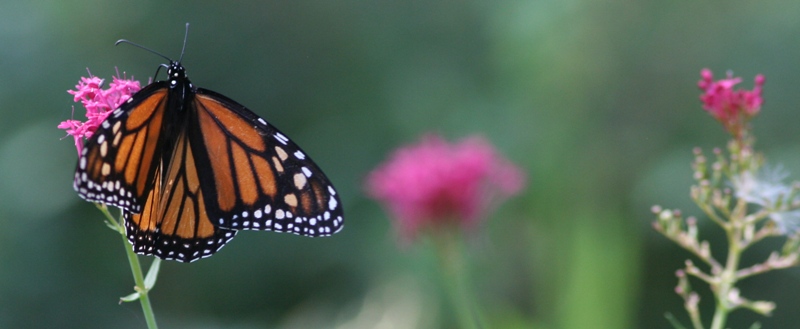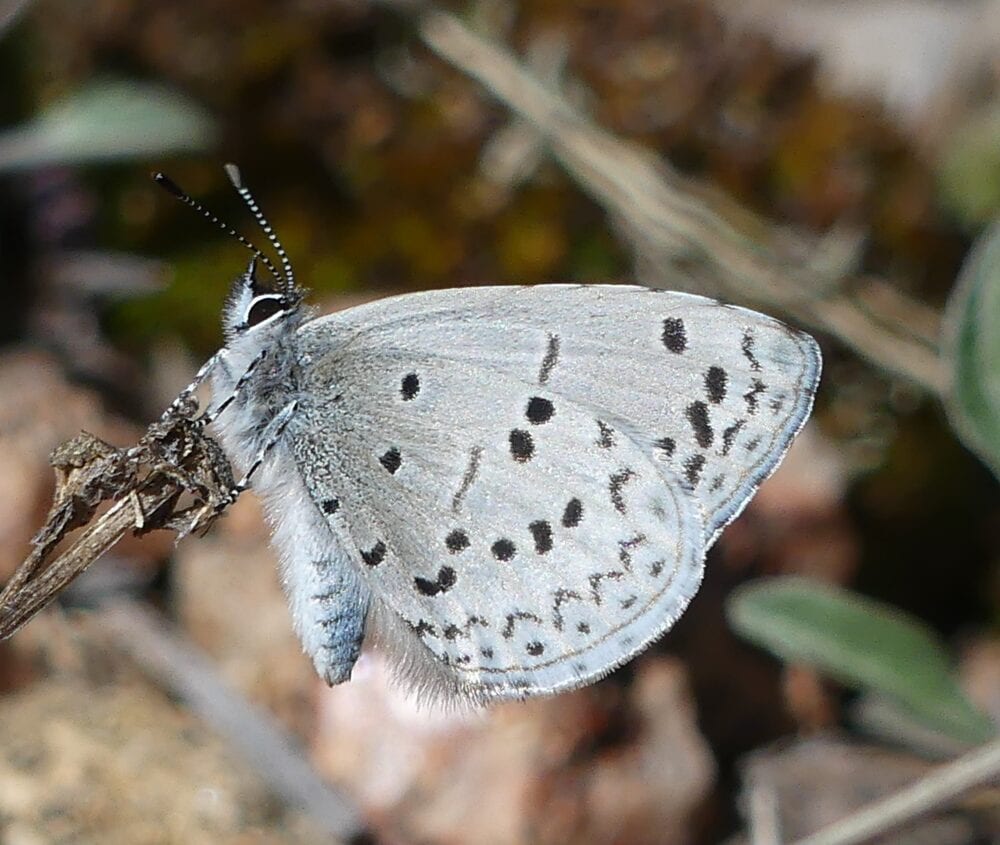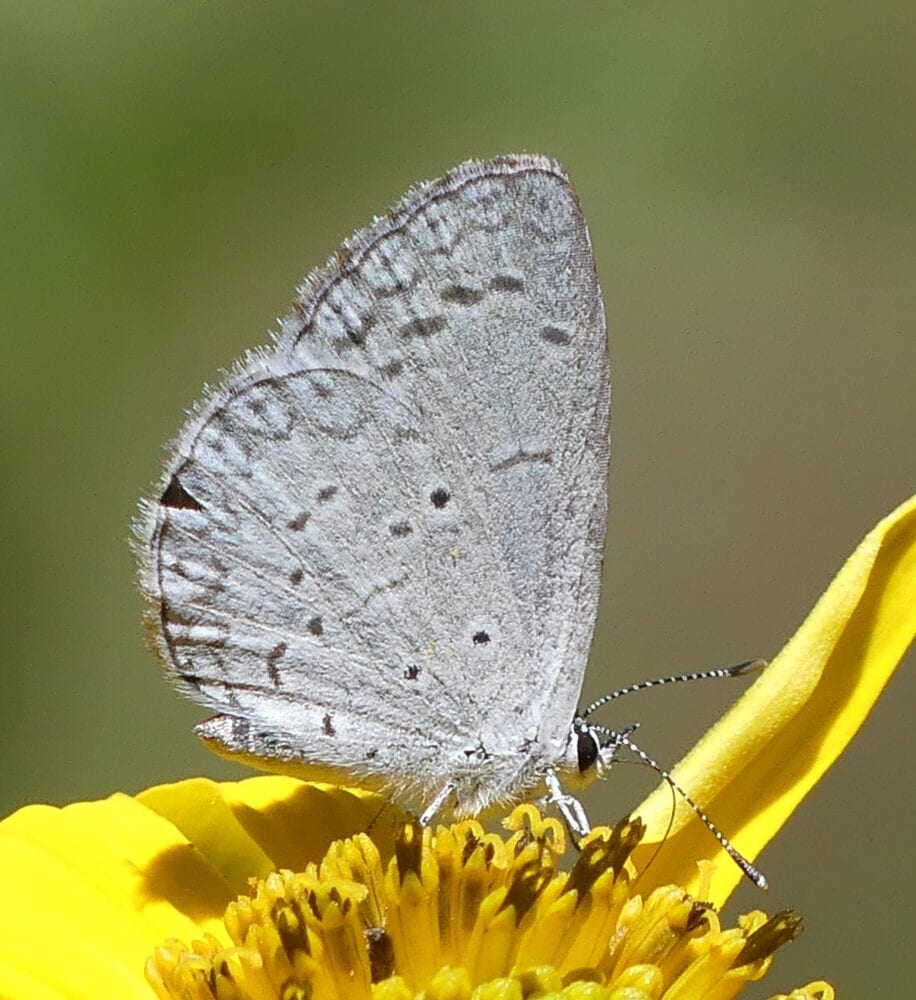April 8, 2021
By Steve Cary

Before I exhaust the “Rites of Spring” genre, I want to touch on several things, then be done with it. First, the truly remarkable ‘ritual’ migrations of Monarch and Painted Lady are underway, but conditions are poor and all such migrants are in for a tough trip this spring. North-bound Monarchs are never abundant in New Mexico because we are usually off-axis from the main migration route from Mexico, and from whatever is happening in greater Arizona. In most years only a few are recorded in our state. This year’s first sighting was in Portales! James Lofton shared the included photo, showing one of a few he saw within a few days of each other. Plagued by drought-like the rest of us, with nectar very scarce, James said: “The dandelion crop [is the] savior this spring.” Then Jim VonLoh shared photos of a monarch nectaring at willows along the Rio Grande near Las Cruces on March 26.
In spring, Monarchs from Mexico are working their way north and east into their milkweed breadbasket: moister parts of the Great Plains. Therefore, in New Mexico, most spring Monarchs are seen southeast of the diagonal from Las Cruces to Portales. Then within the last four days, Rene and Christyna Laubach saw one in northern Santa Fe County and Hira Walker has seen two in Albuquerque at the Bio Park. This illuminates a secondary New Mexico route for northbound monarchs: the Rio Grande corridor. All observations of monarchs, with or without photos, should be posted to Journey North here: Journey North Sighting Form, or to another online citizen science site. We need all the data we can get for this magnificent, troubled, species.

As for Painted Ladies, James Lofton’s mid-March report of a Painted Lady is the first to which I’ve been alerted this year. Typically, Painted Ladies exploit good conditions and can multiply rapidly. There is little sign of them yet this year, probably because conditions (of nectar and host thistles) are poor throughout the region.
Those hilltopping whites I discussed in an earlier post are being seen this year despite my low expectations. Several of you submitted to BAMONA your images of Desert Orangetip, Southwestern Orangetip, and Desert Marble. In Grant County, Marcy and I saw a small number of Southwestern Orangetips and Spring Whites at the Gila River Bird Area south of Cliff. They were mostly near the water’s edge, at mud, or searching for mustards beneath the cottonwoods. The next day, at The Nature Conservancy’s Mogollon Box Preserve north of Cliff, we saw a couple of Desert Marbles, trying to hilltop in the wind or find moisture at the river bank. As a bonus, we scored a Sagebrush Checkerspot, for which I needed a good ventral photo. Clearly spring species were flying in the Silver City to Las Cruces region, but to my eye in very small numbers. Spring temperatures are moving north and sure enough, this past week Selvi Viswanathan shared her backyard photos from Los Alamos of Spring White and Southwestern Orangetip. There’s that dandelion again!
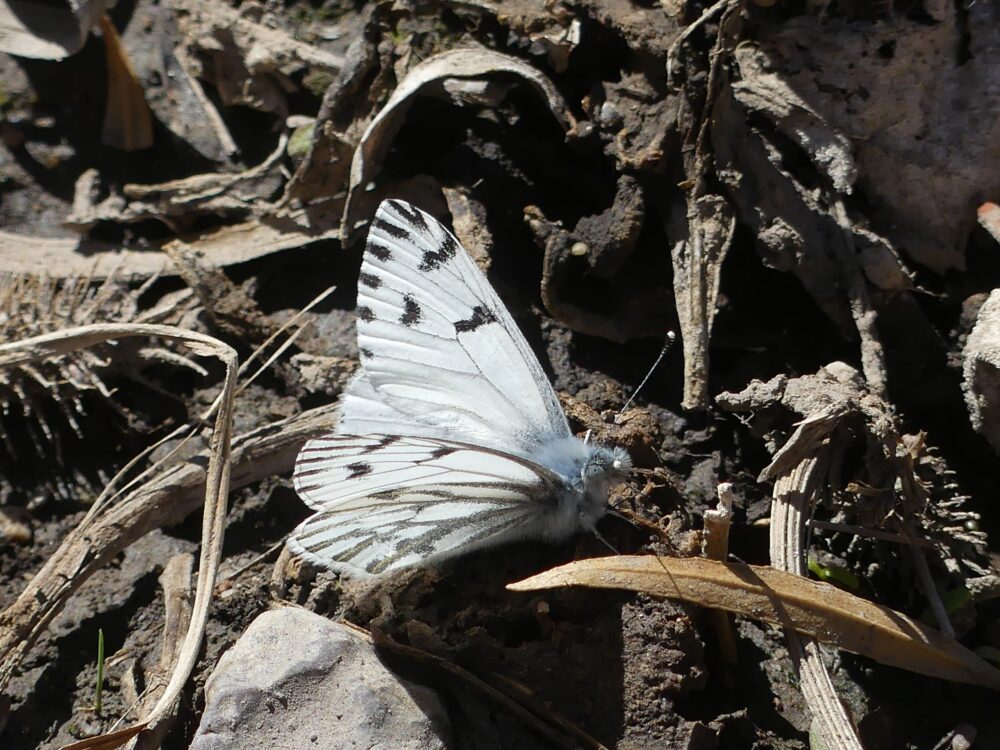
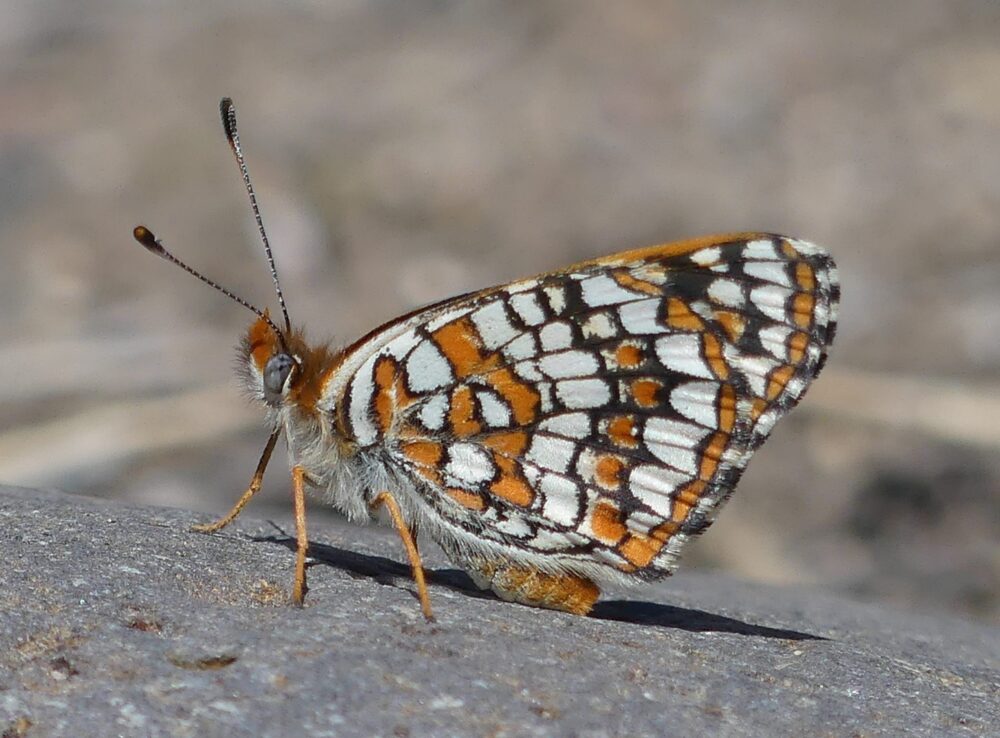
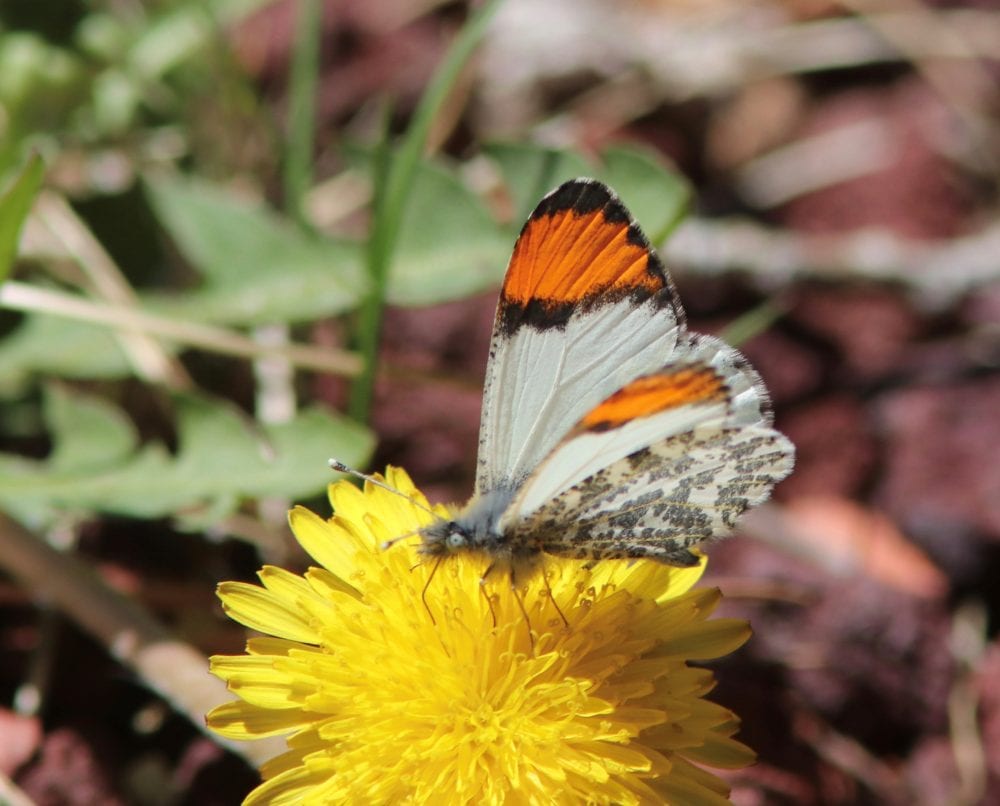
Finally, the Azures! At last, I drank the Koolaid and have accepted that New Mexico has western Echo Azure (Celastrina echo) rather than eastern Spring Azure (Celastrina ladon). All BAMONA records of Spring Azure from New Mexico have been bumped over to Echo Azure. With that done, we can now give more thought to Echo Azure and it turns out that New Mexico has two forms of Echo Azure: Rocky Mountains Echo (subspecies C. echo sidara) in the north and Southwestern Echo (subspecies C. echo cinerea) in the south. Check out the photos below. Undersides of sidara are boldly marked while undersides of cinerea are lightly marked, pretty easy to tell apart. My question, which you can help answer, is where to draw the line (is there a line?) between the two forms. Mostly I think it can be drawn south of the Jemez and Sangre de Cristos, which have sidara. From the Sandia Mountains southward and westward, cinerea seems to prevail.

Rocky Mountains Echo Azure (Celastrina echo sidara) Santa Fe Co., NM; April 27, 2020. (Photo by Steve Cary) 
Southwestern Echo Azure (Celastrina echo cinerea) Manzano Mountains, Torrance Co., NM; July 29, 2020. (Photo by Steve Cary)
But, I have not yet seen any images from Mt. Taylor, north of Grants, so I don’t know which form lives there. The Zuni Mountains west of Grants seem to have cinerea, but that does not necessarily mean that Mt. Taylor will. Please go and get some photos. Second, if you look at the account for Echo Azure in PEEC’s Butterflies of New Mexico, you’ll see that we need a dorsal photo of a female Southwestern Echo Azure. I have an old slide showing a female that expired in mud in the San Mateo Mountains, but I want to do better than that. Azures rarely show uppersides, usually early in the day while basking, males more frequently than females. Females perhaps during a post-egg-placement rest period. Patience will be required, but I’d love to add your photo to the BofNM species account. For both of these tasks, I think the best time to look on Mt. Taylor is from late April into May. Good luck and I look forward to seeing what you get!

